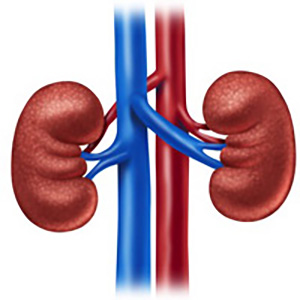Sheathed flexible retrograde intrarenal surgery without safety guide wire for upper urinary tract stones

Accepted: May 27, 2022
All claims expressed in this article are solely those of the authors and do not necessarily represent those of their affiliated organizations, or those of the publisher, the editors and the reviewers. Any product that may be evaluated in this article or claim that may be made by its manufacturer is not guaranteed or endorsed by the publisher.
Objectives: To assess the success rate and intraoperative complications of flexible ureterorenoscopy (f-URS) in patients with upper urinary tract (UUT) stones using a ureteral access sheath (UAS) without a safety guide wire (SGW). Patients and methods: Between April 2010 and March 2022, 464 renal units in patients with renal stones with and without concomitant ureteral stones (UUT), underwent ureterorenoscopy by one surgeon, and UAS was used in all of them. The primary endpoint was the stone-free rate (SFR). SFR was defined as no residual fragments at all. The following characteristics were examined: age, sex, laterality, renal/ureteral stones, stone diameter, SFR, Hounsfield unit, auxiliary procedures, double-J stent insertion, and intraoperative complications. This study was retrospective, with all the data recorded prospectively. Patients with residual stones were scheduled for the 2nd RIRS. The Clavien-Dindo classification was used to report complications. Results: The mean patient age was 52.9 years. The mean stone size was 13.1 mm. Lower pole, upper and middle calyces, renal pelvis and ureteral stones were found in 51.5% (239), 34.9% (162), 18.3% (85) and 46.9% (218) of cases, respectively. The mean diameter was 8.1 mm, 8 mm, 12.5 mm and 8.1 mm for the lower pole, upper and middle calyces, renal pelvis and ureteral stones, respectively. The single- and second-session SFRs were 90% and 100%, respectively. The mean number of procedures per renal unit was 1.1. Ureteral double-J stents were inserted in 45.7% (212) of patients. In 96 cases, a stent was placed before surgery. Postoperative complications were minor, with no avulsion or perforation of the ureters; readmission and insertion of a DJ stent occurred in one patient. Ureteral stricture developed in one patient (0.2%) and needed treatment with laser ureterotomy. Conclusions: f-URS is a safe and effective mode of surgical management of renal and simultaneous renal and ureteral calculi using the ureteral access sheath without a safety guide wire. A guide wire should not be routinely used in these cases.
Sorokin I, Mamoulakis C, Miyazawa K, et al. Epidemiology of stone disease across the world. World J Urol. 2017; 35:1301-1320. DOI: https://doi.org/10.1007/s00345-017-2008-6
Sprunger JK, Herrell SD 3rd. Techniques of ureteroscopy. Urol Clin North Am. 2004; 31:61-9. DOI: https://doi.org/10.1016/S0094-0143(03)00093-4
Bagley DH, Kuo RL, Zeltser IS. An update on ureteroscopic instrumentation for the treatment of urolithiasis. Curr Opin Urol. 2004;14:99-106. DOI: https://doi.org/10.1097/00042307-200403000-00009
de la Rosette J, Denstedt J, Geavlete P, et al. CROES URS Study Group. The clinical research office of the endourological society ureteroscopy global study: indications, complications, and outcomes in 11,885 patients. .J Endourol. 2014; 28:131-9. DOI: https://doi.org/10.1089/end.2013.0436
Kılıç Ö, Akand M, Van Cleynenbreugel B. Retrograde intrarenal surgery for renal stones - Part 2. Turk J Urol. 2017; 43:252-260. DOI: https://doi.org/10.5152/tud.2017.22697
Dindo D, Demartines N, Clavien PA. Classification of surgical complications: a new proposal with evaluation in a cohort of 6336 patients and results of a survey. Ann Surg. 2004; 240:205-13. DOI: https://doi.org/10.1097/01.sla.0000133083.54934.ae
Sanguedolce F, Bozzini G, Chew B, et al. The evolving role of retrograde intrarenal surgery in the treatment of urolithiasis. Eur Urol Focus. 2017; 3:46-55. DOI: https://doi.org/10.1016/j.euf.2017.04.007
Breda A, Angerri O. Retrograde intrarenal surgery for kidney stones larger than 2.5 cm. Curr Opin Urol. 2014; 24:179-83. DOI: https://doi.org/10.1097/MOU.0000000000000030
Ho A, Sarmah P, Bres-Niewada E. Ureteroscopy for stone disease: expanding roles in the modern era. Cent European J Urol. 2017; 70:175-178. DOI: https://doi.org/10.5173/ceju.2017.1343
Kumar PV, Keeley FX, Timoney AG. Safe flexible ureterorenoscopy with a dual lumen access catheter and a safety guide wire. BJU Int. 2001; 88:638-9. DOI: https://doi.org/10.1046/j.1464-410X.2001.02402.x
Patel SR, McLaren ID, Nakada SY. The ureteroscope as a safety wire for ureteronephroscopy. J Endourol. 2012; 26:351-4. DOI: https://doi.org/10.1089/end.2011.0406
Johnson GB, Portela D, Grasso M. Advanced ureteroscopy: wireless and sheathless. J Endourol. 2006; 20:552-5. DOI: https://doi.org/10.1089/end.2006.20.552
Eandi JA, Hu B, Low RK. Evaluation of the impact and need for use of a safety guide wire during ureteroscopy. J Endourol. 2008;22:1653-8. DOI: https://doi.org/10.1089/end.2008.0071
Moran ME, Bratslavsky G. Changing paradigm during routine flexible ureteroscopy and Holmium: YAG laser lithotripsy: need for safety wires? J Endourol. 2003; 17:A225.
Ulvik Ø, Rennesund K, Gjengstø P, et al. Ureteroscopy with and without safety guide wire: should the safety wire still be mandatory? J Endourol. 2013; 27:1197-202. DOI: https://doi.org/10.1089/end.2013.0248
Dickstein RJ, Kreshover JE, Babayan RK, Wang DS. Is a safety wire necessary during routine flexible ureteroscopy? J Endourol. 2010; 24:1589-92. DOI: https://doi.org/10.1089/end.2010.0145
Ulvik Ø, Wentzel-Larsen T, Ulvik NM. A safety guide wire influences the pushing and pulling forces needed to move the ureteroscope in the ureter: a clinical randomized, crossover study. J Endourol. 2013; 27:850-5. DOI: https://doi.org/10.1089/end.2013.0027
Molina WR Junior, Pessoa RR, Silva RDD, et al. Is a safety guide wire needed for retrograde ureteroscopy? Rev Assoc Med Bras (1992). 2017; 63:717-721. DOI: https://doi.org/10.1590/1806-9282.63.08.717
Dutta R, Vyas A, Landman J, Clayman RV. Death of the safety guide wire. J Endourol. 2016; 30:941-4. DOI: https://doi.org/10.1089/end.2016.0314
PAGEPress has chosen to apply the Creative Commons Attribution NonCommercial 4.0 International License (CC BY-NC 4.0) to all manuscripts to be published.


 https://doi.org/10.4081/aiua.2022.2.186
https://doi.org/10.4081/aiua.2022.2.186



